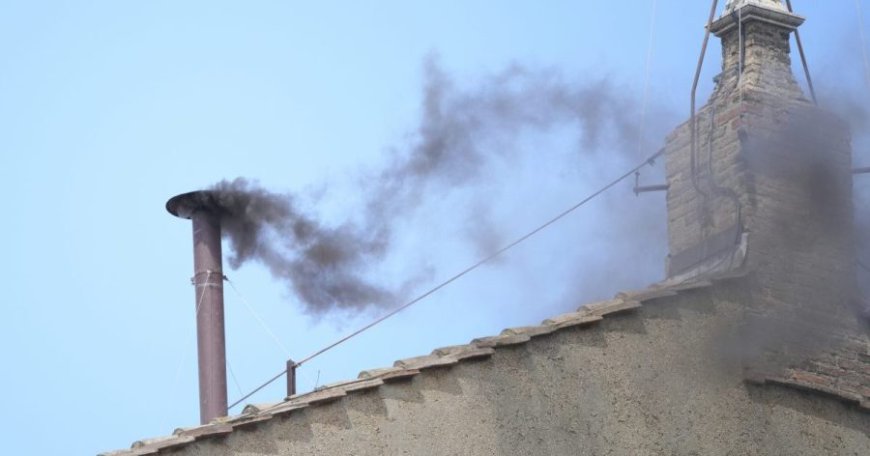Black smoke: No decision after Cardinals hold morning votes on new pope

VATICAN CITY (AP) — Cardinals failed again Thursday morning to find a successor to Pope Francis, sending black smoke billowing up through the Sistine Chapel chimney after two more inconclusive rounds of conclave voting.
The black smoke poured out at 11:50 a.m. (0950 GMT) after the second and third ballots to elect a pope to lead the 1.4 billion-member Catholic Church.
With no one securing the necessary two-thirds majority, or 89 votes, the 133 cardinals will return to the Vatican residences where they are being sequestered. They will have lunch and then return to the Sistine Chapel for the afternoon voting session. Two more votes are possible Thursday.
The cardinals had returned to the Sistine Chapel on Thursday to resume voting for a new pope and crowds flocked back to St. Peter's Square to await their decision, after the first conclave ballot failed to find a winner during a longer-than-expected voting session Wednesday afternoon.
The billowing black smoke poured out of the chapel chimney just after 9 p.m. Wednesday (1900 GMT), about 4½ hours after the cardinals filed into the chapel. That prompted speculation about what took so long for the 133 electors to cast and count their ballots.
Hypotheses abound: Did they have to redo the vote? Did someone get sick or need translation help? Did the papal preacher take a long time to deliver his meditation before the voting began?
“They probably need more time,” said Costanza Ranaldi, a 63-year-old who traveled from Pescara in Italy’s Abruzzo region to the Vatican.
Some of the 133 voting cardinals had said they expected a short conclave to replace Pope Francis. But it will likely take a few rounds of voting for one man to secure the two-thirds majority, or 89 ballots, necessary to become the 267th pope.
For much of the past century, the conclave has needed between three and 14 ballots to find a pope. John Paul I — the pope who reigned for 33 days in 1978 — was elected on the fourth ballot. His successor, John Paul II, needed eight. Francis was elected on the fifth in 2013.
The cardinals opened the secretive, centuries-old ritual Wednesday afternoon, participating in a rite more theatrical than even Hollywood could create.
Cardinal Pietro Parolin, the 70-year-old secretary of state under Francis and a leading contender to succeed him as pope, assumed leadership of the proceedings as the most senior cardinal under age 80 eligible to participate.
Outside in St. Peter’s Square, the atmosphere was festive as thousands of people flocked to the piazza to watch the proceedings on giant video screens, applauding when the Sistine Chapel’s doors slammed shut and the voting began.
They waited for hours, watching screens that showed just a skinny chimney and occasional seagull. After the vote dragged on to dinnertime, some left in frustration, but those who stayed cheered when the smoke finally billowed out.
“My hope is that cardinals will choose a man who can be a peacemaker and could reunify the church,” said Gabriel Capry, a 27-year-old from London.
The cardinals were sequestered from the outside world, their cellphones surrendered and airwaves around the Vatican jammed to prevent all communications until they find a new pope.
Francis named 108 of the 133 “princes of the church,” choosing many pastors in his image from far-flung countries like Mongolia, Sweden and Tonga that had never had a cardinal before.
His decision to surpass the usual limit of 120 cardinal electors has both lengthened the amount of time it takes for each vote to be processed and injected more uncertainty into a process that is always full of mystery and suspense.
What's Your Reaction?
 Like
0
Like
0
 Dislike
0
Dislike
0
 Love
0
Love
0
 Funny
0
Funny
0
 Angry
0
Angry
0
 Sad
0
Sad
0
 Wow
0
Wow
0







































